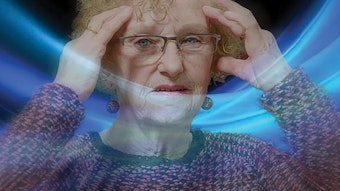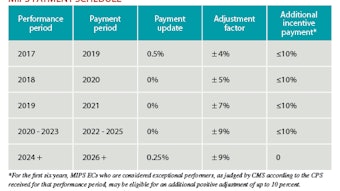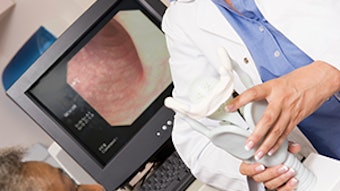The otolaryngologist as endocrine surgeon
Otolaryngology is an amazingly diverse specialty, extending from medical treatment of allergies to a wide-range of pediatrics, and from otology/neurotology/skull base surgery to head-neck surgery, and now, thyroid and parathyroid endocrine surgery of the neck. One must keep in mind the high prevalence of hyperparathyroidism in our patient population.
 Gregory W. Randolph, MD
Gregory W. Randolph, MD
AAO-HNS/F Past President
We now recognize within otolaryngology- head neck surgery the discrete subspecialist: otolaryngologist as thyroid and parathyroid neck endocrine surgeon.
There is a history here. In 1883 Professor Theodor Kocher, father of modern thyroidectomy, presented his historic paper describing the adverse effects of un-supplemented total thyroidectomy (termed cachexia strumiprivia) to the Fifth German Surgical Congress. At about this time, Sir Felix Semon, MD, a Prussian otolaryngologist, also suggested in a meeting of the Clinical Society of London, similarities between English myxedematous patients and patients who had undergone total thyroidectomy.1
An ideal training background for a thyroid and parathyroid neck surgeon is a typical otolaryngology residency. Such training optimally positions the surgeon for a career in thyroid and parathyroid surgery given the depth of training in head and neck surgical oncologic treatment, understanding of recurrent laryngeal nerve and laryngeal anatomy and function, and assessment of nodal disease and its treatment. It is important that we articulate this unique set of skills of the otolaryngologist to patients, and to program directors, and individuals in hiring positions in large otolaryngology groups. It is equally important to articulate this discrete species of otolaryngologist to our trainees, residents, and fellows. David Goldenberg, MD, and Ralph P. Tufano, MD, have led over several years high-quality educational initiatives on behalf of the AAO-HNSF and American Head and Neck Society (AHNS) for residents and fellows to meet this very need.
Perhaps the first stop in endocrine surgical activities is our Endocrine Surgery Committee, recently designated as a Model Committee. Past chairs include myself and the late Robert A. Sofferman, MD. The committee is led by Dr. Tufano, who has done a tremendous job mentoring dozens of young surgeons in this field. We will be in excellent hands with David L. Steward, MD, who oversees the expansion of our website patient materials, including videos relating to endocrine surgery.
The Academy has written the first surgical guideline2 relating to recurrent laryngeal nerve management and voice optimization at the time of thyroid surgery. The Academy’s activities have also extended to important endocrine liaisons including participation in the American Thyroid Association’s thyroid nodule and thyroid cancer guidelines3, whose authors included two Academy members. Miriam N. Lango, MD, and Kevin T. Brumund, MD, spearheaded the Academy’s liaison with ThyCa, a national thyroid cancer survivors group.
Important position statements relating to endocrine surgery have recently been authored. Mark E. Zafereo, Jr., MD, led a position statement on SPECT/CT for preoperative parathyroid surgical imaging and Dr. Steward led the position statement on surgeon-performed ultrasound. Many of the papers referenced in this position statement were authored by him and Lisa A. Orloff, MD.
The AAO-HNSF 2016 Annual Meeting included 14 endocrine surgical Instruction Courses and seven endocrine surgical Miniseminars ranging from complications in thyroid surgery, to finding the hidden parathyroid adenoma, to thyroid cancer in Korea versus U.S., to molecular analysis of thyroid nodularity.
David J. Terris, MD, is chair of the new AHNS Endocrine Section, which is also broadening otolaryngologic endocrine surgical initiatives, including endocrine surgical fellowships. The initiatives within the AHNS are significant and include the recent superb invasive thyroid cancer guidelines4 led by Maisie L. Shindo, MD.
References:
- Randolph GW (Ed). Surgery of the Thyroid and Parathyroid Glands. 2nd edition. 2013. Philadelphia, PA: Elsevier Saunders , p 6.
- Chandrasekhar S, Randolph GW, Seidman MD, et al. Clinical Practice Guideline: Improving Voice Outcomes after Thyroid Surgery. Otolaryngol Head Neck Surg. 2013 Jun;148(6 Suppl): S1-37.
- Haugen B, Alexander E, Bible K, et al. 2015 American Thyroid Association Management Guidelines for Adult Patients with Thyroid Nodules and Differentiated Thyroid Cancer. Thyroid. 2016 Jan;26(1):1-133.
- Shindo M, Caruana SM, McCaffrey J, et al. Management of invasive well-differentiated thyroid cancer: an American Head and Neck Society Consensus Statement. Head Neck. 2014 Oct;36(10):1379-1390.











